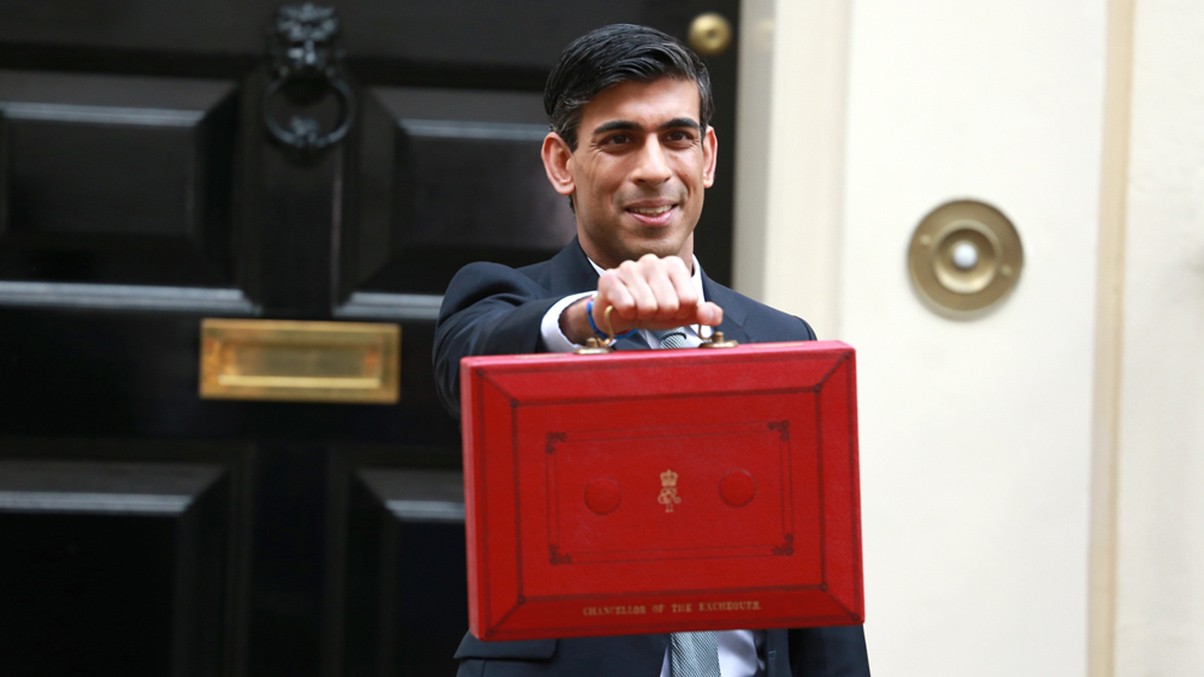Tax Litigation and Investigations Partner Victor Cramer writes in the Tax Journal about the potential wider impact of the Cheshire Centre for Independent Living decision on payroll services in the care sector, and questions whether the decision is correct.
Cheshire Centre for Independent Living (CCIL) is a charity providing a range of support services for disabled people, their families, and their carers. Its mission statement is: ‘To empower local disabled people to have independence, choice and control over their lives and to remove the barriers which exist within society.’
The case of HMRC v Cheshire Centre for Independent Living [2020] UKUT 275 (TCC) is interesting and concerning. It is interesting on costs. Despite losing the case in the Upper Tribunal, CCIL was awarded its costs, including the costs of the First-tier Tribunal (FTT) hearing. It is concerning because of HMRC’s argument on the nature and scope of the VAT exemption for welfare services. This point remains undetermined.
There is a final point of interest, which perhaps shows a sympathetic approach from HMRC. The appeal stems from a decision in January 2013. The FTT decision ([2019] UKFTT 354 (TC)) was released in June 2019 and notes that HMRC had not raised assessments. Presumably by 2019 HMRC was out of time. Hopefully, that limits the financial impact for CCIL.
Background
CCIL works with disabled people who are in receipt of ‘direct payments’ from various health bodies. The purpose of these direct payments is to allow the individual the greatest possible amount of control and self-determination over their lives and their care provision.
Many of CCIL’s clients need a personal assistant to help with day-to-day activities. The direct payments scheme means that disabled people employ their own personal assistance and they become responsible for the various legal and tax requirements imposed on employers.
CCIL’s services include a payroll service, which comprises all of the usual elements of an outsourced payroll provider.
These include:
- pension auto-enrolment;
- wage calculations and payslip production;
- PAYE and similar paperwork; and
- PAYE and NICs calculation and payment. CCIL charged its clients for these services.
In January 2013, HMRC issued a ruling that CCIL’s payroll services were standard rated for VAT purposes.
Whilst not all disputes with HMRC start with the law, this one does. Before looking at the positions taken by the parties, it is necessary to look at the legislation. The arguments concerned the interpretation of article 132(1)(g) of the VAT Directive 2006. This is reflected in VATA 1994 Sch 9 Group 7 item 9.
In summary, VATA 1994 exempts the supply by a charity of welfare services and of good supplied in connection with those welfare services. Note 6 defines welfare services as meaning services directly connected with the provision of care of disabled persons (I paraphrase slightly).
Article 132(1)(g) is a mandatory exemption for the supply of services and of goods closely linked to welfare and social security work by bodies governed by public law, or by other bodies recognised as being devoted to social wellbeing. Article 312(1) is qualified by article 134. This limits the exemption to supplies which are ‘essential to the transactions exempted’.
The First-tier Tribunal
It was common ground that CCIL was an eligible body.
HMRC rejected the claim on the basis that the payroll service was one step removed from the actual care received by the disabled person. The personal assistant provided the care service, and the payroll service was provided to the disabled person, who HMRC said might use the service because they needed to, or simply because they preferred not to deal with employment administration.
HMRC then took the tribunal through a series of cases:
- Diagnostiko & Therapeftiko Kentro Athinon-Ygeia AE v Ipourgos Ikonomikon (joined Cases C-394/04 and C-395/04), which deals with article 134(1)(b), (c));
- Christoph-Dornier-Stiftung für Klinische Psychologie v Finanzamt GieŸen (Case C-45/01), which also deals with article 134(1)(b), (c));
- Commission v Germany (Case C-287/00), dealing with article 134(1)(i)); and
- Brockenhurst College v HMRC (Case C-699/15), which again deals with article 134(1)(i)).
HMRC relied on these cases to say that the payroll service was not logically part of, or indispensable to the provision of the care service. It also said that it improved the nature and quality of the direct payment service, rather than the care service.
Against this, the taxpayer argued that the direct payments scheme was directly connected with the provision of care, and was one of the ways in which a local authority could meet its obligations to provide care obligations under the Care Act 2014 ss 18–20. The individuals who required care did not become employers through choice; it was a necessary part of being independent.
The FTT concluded that the payroll services was a means of better enjoying the care service provided by the personal assistant, and had to be considered in the particular context of disabled persons and the direct payments scheme. The nature of the payroll service was such that without it, the care package provided would have lesser value, and without the payroll services many disabled persons would be unable to deal with the responsibilities of becoming an employer.
As a result, the FTT found that the payroll service was a service closely linked to welfare work for the purposes of article 132(1)(g), and a service directly connected with the provision of care, for the purposes of item 9.
HMRC appealed to the Upper Tribunal. It applied on two grounds, one of which was entirely new. That new ground caused CCIL to concede.
The costs consequences
CCIL applied for costs, arguing that it would not have taken the case in the face of HMRC’s new argument, which was open to them from the outset.
The Upper Tribunal concluded that HMRC was obliged to go beyond the points raised by the taxpayer, and consider the exemption position in the round. Had it done so, the new argument would have been apparent. Failure to do so was unreasonable, and CCIL recovered their costs.
Combined with the UT’s recent exhortation to consider mediation and ADR more widely, this decision demonstrates that the tribunal will hold parties to account for failing to identify the fundamentals of their position. And the fundamentals of their position can be wider than the case being stated.
But what of the new argument? Was it right?
What was HMRC’s killer new point?
HMRC built its case on the four CJEU decisions mentioned above. They concern articles 132(1)(b), (c) and (i).
It cited Brockenhurst in the context of article 132(1)(i): ‘both the principal supply and the supplies of services closely related to it must be provided by bodies referred to in Article 132(1)(i) of that directive’.
This, it said, led to the conclusion that the payroll service could not be exempt. The care service was provided by an employee to their employer and was not a supply for VAT purposes. The employee was not an eligible body, and the care supply was not exempt. The provision of care by an employed personal assistant could not therefore give rise to an exempt closely related supply.
Article 132 exemptions come in different flavours. They are:
- the supply of X;
- the supply of X and goods or services connected to X; and
- the supply of services closely connected to X. The text of the exemptions is important:
- Article 132(1)(b): ‘hospital and medical care and closely related activities undertaken by bodies governed by public law’
- Article 132(1)(c): ‘the provision of medical care in the exercise of the medical and paramedical professions as defined by the Member State concerned’
- Article 132(1)(i): ‘the provision of children’s or young people’s education, school or university education, vocational training or retraining, including the supply of services and of goods closely related thereto, by bodies governed by public law’
- Article 132(1)(g): ‘the supply of services and of goods closely linked to welfare and social security work, including those supplied by old people’s homes, by bodies governed by public law or by other bodies recognised by the Member State concerned as being devoted to social wellbeing.’
In each case there is an exempt transaction. For articles 132(1)(b) and (1)(i), there is also an exemption for an ancillary activity, so for (1)(b) and (1)(i) there is a ‘core’ exempt activity, and an ancillary exempt activity. Brockenhurst deals with (1)(i), which sets out both a core and an ancillary exempt supply. That is not the case in relation to (1)(g). The welfare exemption does not have the ‘core-ancillary’ structure: the supplies exempted by (1)(g) are only the supplies closely connected to welfare and social security work.
HMRC’s analysis stretched the decision in Brockenhurst too far. Nothing in article 132(1)(g) or article 134 requires the actual care service to be exempt. It is almost certainly right that only services which are properly ancillary to welfare and social security work are exempt. What matters is whether the payroll service is closely related to and essential for the care service, not the VAT liability of care service. This analysis reflects the restriction in article 134 in the context of article 132(1)(g).
On the facts, the Upper Tribunal held that it was.
The CJEU decision in Bridport & West Dorset Golf Club Ltd V HMRC (Case C-495/12) supports this. Bridport concerned the VAT treatment of green fees paid for access to a golf course by non-members. The relevant exemption is found in article 132(1)(m): ‘the supply of certain services closely linked to sport or physical education by non-profit-making organisations to persons taking part in sport or physical education’.
Article 132(1)(m) has the same structure as (1)(g). Sport or physical education, much like welfare and social security work may well not itself be an economic activity at all.
In Bridport, the CJEU was asked to identify what, if any, was the core ‘transaction exempted’ for the purposes of article 134. It declined to do so.
The Brockenhurst tests do not work when applied to Bridport. As with CCIL, in Bridport’s case there was only a closely related supply, with no core exempt activity. The closely related supply was the core exempt activity. If the absence of an exempt core transaction was in all cases fatal to a ‘closely related services’ exemption, then Bridport must be wrong.
Brockenhurst was only three years after Bridport, and yet Brockenhurst does not mention Bridport at all. It would be very surprising if the CJEU had departed from a very recent line of reasoning without mention. It must therefore be possible to read both decisions as being concurrently correct.
This is not difficult when one recognises that article 132(1) contains exemptions structured in different ways. Cases relating to one structure do not necessarily read across to others. For a supply under article 132(1)(g) to be exempt, it must be closely related to care and welfare, but also essential for a supply closely related to care and welfare. In effect, one must look at the supply in question and ask whether it is essential to care and welfare, either taken alone, or as part of a wider service. That is a question of fact. In this case, the FTT concluded that: ‘Many if not most users of the Payroll Service would find it difficult if not impossible to fulfil their employer payroll responsibilities without subscribing to the Payroll Service’. The payroll service was therefore essential as a supply of services closely related to welfare. That analysis gives article 134 a slightly different application for different classes of exemption, but it applies nonetheless.
This is not a point which should be considered settled in HMRC’s favour.
What is the future impact?
CCIL has potentially wider impact for the care and welfare sector. Welfare service providers should be reviewing their position carefully and watching for HMRC updates. Many state-provided welfare services will not be VATable supplies. Anything ancillary to a non-supply could be affected if HMRC take its argument to its logical conclusion. Although HMRC ultimately won the CCIL case, this point has not been decided. Perhaps it should be. Care and welfare support costs do not need to be 20% higher.
View the article published in the Tax Journal here. Subscription required
You can find further information regarding our expertise, experience and team on our Tax Litigation and Investigations pages.
If you require assistance from our team, please contact us or request a call back from one of our lawyers by submitting this form.
Subscribe – In order to receive our news straight to your inbox, subscribe here. Our newsletters are sent no more than once a month.



